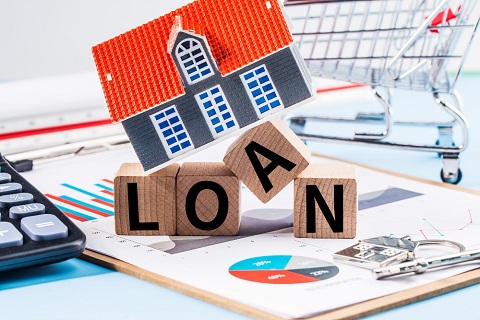When it comes to navigating the intricate world of home loans, you need more than just luck on your side. The process of securing a home loan can be overwhelming and complex, but fear not – we are here to guide you through every step of the way. Whether you’re a first-time homebuyer or a seasoned investor, our comprehensive guide will provide you with the knowledge and insights you need to make informed decisions and secure the best possible home loan for your unique situation.
Understanding the Home Loan Basics
Before diving into the details, it’s crucial to have a solid grasp of the fundamental concepts surrounding home loans. A home loan, also known as a mortgage, is a financial agreement between a borrower and a lender, typically a bank or a mortgage company. The borrower receives a lump sum of money to purchase a home, and in return, they agree to repay the loan amount over a specified period, usually with interest.
Types of Home Loans
Home loans come in various shapes and sizes, each catering to different financial needs and preferences. Here are some of the most common types of home loans:
Fixed-Rate Mortgages:
With a fixed-rate mortgage, the interest rate remains constant throughout the loan term. This type of loan provides stability and predictability, making it a popular choice among homeowners.
Adjustable-Rate Mortgages (ARMs):
Unlike fixed-rate mortgages, ARMs have interest rates that can fluctuate over time. They often start with a lower rate than fixed-rate mortgages but carry the risk of rate increases in the future.
FHA Loans:
Backed by the Federal Housing Administration, FHA loans are designed to help first-time homebuyers and those with lower credit scores. They require a lower down payment and have more flexible qualification criteria.
VA Loans:
Offered to eligible veterans and active-duty service members, VA loans are guaranteed by the Department of Veterans Affairs. These loans often require no down payment and have competitive interest rates.
Jumbo Loans:
Jumbo loans are for home purchases that exceed the limits set by government-sponsored enterprises. These loans usually come with stricter requirements due to their larger loan amounts.
Steps to Securing the Perfect Home Loan
Now that you’re familiar with the basics, let’s delve into the steps you need to take to secure the perfect home loan:
Assess Your Financial Situation
Before applying for a home loan, it’s crucial to take a close look at your finances. Calculate your monthly income, expenses, and existing debts. This will give you a clear picture of how much you can afford to borrow and repay comfortably.
Check Your Credit Score
Your credit score plays a significant role in determining the interest rate you’ll qualify for. A higher credit score generally leads to better loan terms. Review your credit report and address any errors or issues before applying for a loan.
Research Lenders and Loan Options
Not all lenders are created equal. Research various lenders, including banks, credit unions, and online mortgage companies. Compare their loan options, interest rates, and fees to find the best fit for your needs.
Get Pre-Approved
Getting pre-approved for a home loan gives you a clear idea of how much you can borrow and helps you stand out as a serious buyer in the eyes of sellers.
Choose the Right Loan
Based on your financial situation and preferences, choose the type of home loan that aligns with your needs. Consider factors like interest rates, loan terms, and down payment requirements.
Gather Required Documents
Lenders will require various documents to process your loan application, such as proof of income, tax returns, and bank statements. Having these documents ready will expedite the application process.
Submit Your Application
Submit your loan application along with the required documents. The lender will review your application and determine whether you qualify for the loan.
Underwriting and Approval
During the underwriting process, the lender assesses your application, verifies your information, and determines the level of risk. If everything checks out, you’ll receive loan approval.
Closing the Deal
Once your loan is approved, you’ll go through the closing process. This involves signing the necessary paperwork, paying closing costs, and finalizing the loan details.
The Insider’s Views on Boosting Website Traffic
Navigating the world of home loans requires careful planning and a deep understanding of the available options. By following the steps outlined in this comprehensive guide, you’ll be well-equipped to secure the perfect home loan for your needs. Remember, the key to a successful home loan journey is thorough research, financial preparedness, and choosing the right lender. If you’re interested in more insights on boosting website traffic, head over to The Insider’s Views for valuable tips and strategies.
Frequently Asked Questions (FAQs) About Home Loans
There are several types of home loans, including fixed-rate mortgages, adjustable-rate mortgages (ARMs), FHA loans, VA loans, and jumbo loans. Each type has its own features and benefits.
Your credit score plays a crucial role in determining the interest rate you’ll qualify for. A higher credit score generally leads to more favorable loan terms.
Research various lenders, compare their loan options, interest rates, and fees. Choose a lender that aligns with your financial goals and preferences.
Getting pre-approved for a home loan involves submitting your financial information to a lender. Pre-approval gives you an estimate of how much you can borrow and helps in the home buying process.
Lenders typically require proof of income, tax returns, bank statements, and other financial documents to process your home loan application.
Underwriting involves the lender evaluating your application, verifying information, and assessing the risk. If approved, you’ll receive loan approval.
Closing involves signing the final paperwork, paying closing costs, and finalizing the loan details. It’s the last step before you officially become a homeowner.
Conclusion
The home loan landscape might be complex, but armed with the right knowledge, you can confidently navigate it and make informed decisions that will lead you to homeownership. Whether you’re a first-timer or a seasoned homebuyer, this guide serves as your beacon of light through the intricate world of home loans. Happy home hunting!





